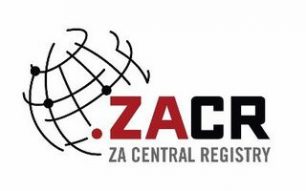ISPA Fibre Primer
(version 0.3, 2025-10-28)
What is an ISP?
An Internet Service Provider (ISP) is an entity that enables access to and use of the internet.
What is an FNO?
A fibre network operator (FNO) operates fibre optic network infrastructure that is the backbone of high-speed internet access. Well known FNOs include Openserve, Vumatel, Frogfoot, Metrofibre, Dark Fibre Africa and Octotel.
What is the primary difference between FNOs and ISPs?
FNOs operate the fibre optic network infrastructure. ISPs connect end users to the internet using the FNOs’ networks and provide support and additional services.
How do ISPs and FNOs work together to deliver internet access and voice services to subscribers?
An analogy: An FNO builds the roads that are used for internet traffic, while ISPs provide the vehicles that transport data from A to B. Together they provide a service that allows you to access the internet at your premises. A customer interacts with (and has an agreement with) an ISP and the ISP interacts with the FNO on behalf of the customer to ensure that the road reaches that customer. A customer should contact their ISP for support.
What is the ISP’s role in the provision of fibre internet?
The fibre customer selects their chosen ISP who will then arrange for a fibre line to be installed. The ISP may provide the customer’s Wi-Fi router and will assist with set-up. Once an FNO has installed the line, the ISP connects the customer to the internet and the rest of the world. While the ISP does not physically provide the fibre, if there is a problem with the line, the ISP is accountable for arranging a repair with the FNO. Customers experiencing a fault should report this to their ISP. ISPs provide comprehensive support to customers of internet services.
What goes into the cost of your fibre service?
An ISP typically has the following costs to connect a customer to the internet:
- The FNO cost (the monthly cost of the line connecting you to the ISP)
- ISP network costs (data centre costs, port fees, network links, equipment)
- Internet connectivity (the cost of connecting the ISP’s network to the rest of the internet)
- Support costs (human resources to help customers get connected and stay connected)
These costs are passed on to customers in the form of monthly service fees. There are also installation costs and the cost of the router that connects your premises to the FNO’s network. Most ISPs absorb the installation and equipment costs so customers only have to pay a monthly fee.
ISPs either offer month-to-month or fixed length (e.g. 24-month) agreements. It is worthwhile to ask your ISP about any cancellation fees that apply to fixed-length (or monthly) contracts, and if there are any additional fees when upgrading or downgrading the speed of the line.
How should I choose an ISP?
The ISP industry is extremely competitive and there is a lot of choice, so price is seldom the only deciding factor when choosing an ISP. Here are some other factors to take into account:
- Support: Are the ISP’s support hours suitable for when you are likely to be using the service and in need of support? Are you able to speak to a technical person if necessary to resolve your issue?
- Reliability: Does the ISP have a good track record of dealing with international cable breaks or other network problems? Check with your neighbours and others in the area if they view the ISP as reliable.
- ISPA membership: ISPA encourages consumers to choose an ISP that is an ISPA member, so that they have the protection of ISPA’s mediation and complaints processes.
- Network security: Does the ISP pay attention to the security of its network? Networks that are not kept “clean” can be blocked by other networks, leading to problems for customers on those networks. [we have doubts about this point]
Is fibre available everywhere?
No. The best way to find out if there is fibre in your area is to check the websites of the FNOs’ websites for coverage.
Why is fibre not available in my complex?
A common scenario is there may be fibre available in your area; but the gated community, complex or apartment building where you live has not granted one or more fibre network operators permission to install. Find out who manages the Body Corporate and start getting other tenants and owners on board to install fibre. Specifically, a ‘Land Owners Consent’ agreement needs to be signed with a fibre network network operator.
What is an open access FNO?
‘Open access’ is crucial to free competition in the SA internet industry and means a particular FNO allows multiple ISPs access to its fibre optic network. The end result is the individual fibre customer can choose from various packages, prices and services offered by many ISPs.
What is closed access?
In this instance, an operator builds and operates network infrastructure and only makes this available to its own ISP. There is typically a limited choice of services for consumers connected to a closed access network.
Are open access networks better than closed access networks?
Open access networks are better at promoting free competition in the internet industry which should result in better service, reduced costs and more reliability.
What is the difference between accessing the Internet using fibre, mobile data and Wi-Fi?
Fibre connects a fixed location and is provided by an FNO (as noted above). Mobile data is a service provided by a mobile operator to a mobile handset usually when in a public space. Wi-Fi is when you are connecting a Wi-Fi enabled device to a Wi-Fi hub that is connected to the internet using fibre or possibly mobile data (LTE).
What is the difference between a Wi-Fi repeater and a Wi-Fi extender?
A repeater connects wirelessly to a router and rebroadcasts the signal, extending the coverage of an existing Wi-Fi network. Because the repeater uses the same bandwidth as the existing network, it can cause a slight decrease in speed and an increase in latency.
An extender typically connects to an existing router using a wired (Ethernet) connection, but can also connect wirelessly. Unlike a repeater, an extender creates another network (with a new network name and a new password) so generally has the same network quality as the original network in a new area.
The term Wi-Fi booster is sometimes used, and can refer to either a repeater or an extender.
What is “Air Fibre”?
Some services are marketed as Air Fibre. These are not, in fact, fibre services, but are wireless services usually using a fixed device at the customer’s premises pointed at an operator’s mast. While this can be an effective way of providing connectivity in some circumstances, Air Fibre cannot reach the same speeds offered by real fibre.
Air Fibre is not the same as an LTE service. An LTE service is a mobile broadband service provided by means of a mobile operator’s network. While LTE can also be used as a substitute for fibre in areas where true fibre is not available, it typically operates at much slower speeds than true fibre, and slightly slower speed than Air Fibre. It is however, usually a mobile service and the access device does not need to be fixed in one position.
What might cause a sluggish internet connection when working from home?
There are many possible causes of poor internet connections, here are a few common causes:
- Bad Wi-Fi: Poorly configured or out-of-date Wi-Fi devices are a leading cause of problems. If the router cannot handle high speeds or if there is a lot of interference, then your internet experience will be compromised.
- Device issues: If your PC has a virus or if it is running a massive software update in the background, that could be using up your connection.
- Family: If you have several family members all watching high definition streams or downloading large files, that could slow down your internet experience.
- Website: The problem might not be on your end, but could be a speed or performance problem with the site you are visiting.
What might interfere with my Wi-Fi signal?
There are many factors that can interfere with Wi-Fi signal strength, including:
- Physical obstructions, such as walls, large metal appliances, and even mirrors, which reflect Wi-Fi signal as well as light.
- Interference from other networks, appliances (especially microwaves), other types of wireless devices (bluetooth devices, wireless security systems).
- Distance from the access point.
How can I troubleshoot a sluggish internet connection?
This depends on the cause:
- Bad Wi-Fi: Test if the Wi-Fi is the problem by plugging a device directly into the fibre router and testing the speed when the Wi-Fi isn’t involved.
- Device issues: Check the network utilisation on your PC and on the devices used by everyone else using the internet connection.
- Family: Change the Wi-Fi password and don’t share it with those bandwidth hogs.
- Website: Try accessing the website from another device, to check if it is a device issue or an internet problem.
Are speed tests accurate?
That depends what you are expecting them to measure, and how exactly you do the measuring. A speed test will typically give you an indication of the spare capacity on the link between you and the location of the speed test server. This means that the speed is limited by every step between you and that server.
If the test server is hosted on a congested network, it will measure the performance of that network, not your fibre. If you have an old PC, it may not have a network card fast enough to keep up with the highest fibre speeds. If you are connecting to the router via an old Wi-Fi system or one that is subject to interference, that will impact the speed test. The router that the Wi-Fi is plugged into, if it is an old device, might also not support higher fibre speeds. Your speed test will never be faster than the slowest device, no matter how fast your fibre is.
A speed test uses the spare capacity on your link, if you have any other activity on your connection, that will also impact the test results. For the best results, plug directly into your customer premises equipment to conduct the test. If you are unable to do that, make sure that all other devices that could be using the internet are deactivated while you do the test.
Even in ideal speed test conditions, there will still be network traffic overheads, and interpacket gaps that result in a slight reduction of the measured speed. Overall, a speed test gives some indication of how fast your connection is, but the results depend on many factors beyond just the fibre speed.
How do ISPs deal with major cable breaks?
South Africa is served by diverse undersea cables landing at a number of different locations. Most ISPs purchase capacity on different cables in order to minimise the impact on their networks should one of the cables go down. Repairs of undersea cables do take several weeks or months to be completed.
What is ISPA?
ISPA is a South African non profit company, and recognised internet industry representative body. Formed in 1996, ISPA has historically served as an active industry body, facilitating exchange between the different independent internet service providers, ICASA and other government structures, operators and other service providers in South Africa.
How does ISPA encourage FNOs and ISPs to adopt best practices?
ISPA and its member ISPs are committed to the best possible relationships with FNOs. ISPA is focused on ensuring that the relationship between FNOs and ISPs is underpinned by open access principles that allow South Africans a choice of providers.
ISPA has developed a set of best practice recommendations for the fibre sector that is regularly updated based on feedback from ISPs and FNOs.






